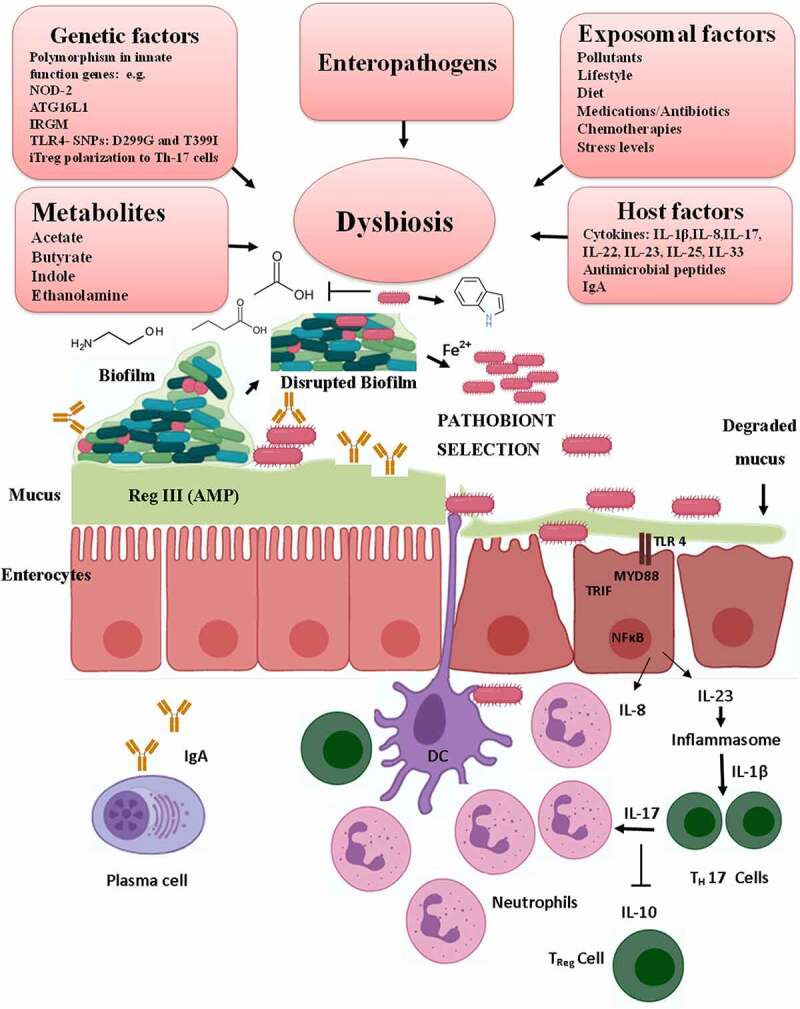Figure 1.

Pathobiont selection and expansion in the gut by multiple strategies. Selection of pathobiont in the gut depends on multiple factors. The top panel shows various intrinsic, exposomal factors and enteropathogen infection that drive gut dysbiosis and the disruption of the biofilm. Increased presence of mucolytic species in the dysbiotic gut degrades the protective mucus layer of the epithelial barrier, which can then be accessed by the pathobionts. Further, the dysbiotic gut causes changes in the metabolites that favor pathobiont selection. Pathobionts are further selected by preferentially utilizing the metabolites and efficiently scavenging iron that helps in their exuberant growth and proliferation. The C. difficile pathobiont, using quorum sensing through Agr1 signaling, promotes indole-producing bacteria, which favor the growth and expansion of the pathobiont C. difficile, which then produces toxins TcdA and TcdB that disrupt the integrity of the epithelial membrane. The exposed epithelial cells recognize the pathobiont by toll-like receptors cause activation of the inflammasome, secrete chemokines/cytokines, and initiate a cascade of inflammatory response that recruits neutrophils and other immune cells via activation of inflammatory Th17 cells to the site of infection. Illustrations were made using Biorender tool
